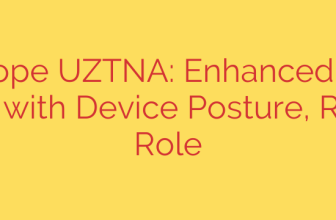
Unifying OT Security: A Comprehensive Guide to Managing Risk, Compliance, and Response
In today’s interconnected world, the security of Operational Technology (OT) environments has become a critical priority for industrial organizations. The convergence of IT and OT has introduced unprecedented efficiency, but it has also exposed sensitive industrial control systems (ICS) to a host of new cyber threats. Managing this risk is often a complex, fragmented effort, relying on a patchwork of tools that fail to provide a complete picture of an organization’s security posture.
A modern, effective strategy requires a shift away from siloed solutions toward a unified platform that integrates risk management, compliance, and incident response. By bringing these functions under a single umbrella, organizations can gain complete visibility, make smarter decisions, and build a more resilient defense against sophisticated attacks.
The Fragmented State of OT Cybersecurity
Many organizations struggle with a collection of disparate security tools. One system handles asset discovery, another monitors network traffic for threats, and a third is used for risk analysis and compliance reporting. This fragmented approach creates significant challenges:
- Inefficiency and High Costs: Managing multiple vendors, interfaces, and data sets consumes valuable time and resources, driving up the total cost of ownership (TCO).
- Data Silos: When data from different systems doesn’t communicate, security teams lack a unified view of their environment, leading to blind spots and delayed threat detection.
- Inconsistent Risk Assessment: Without a single source of truth, it’s nearly impossible to accurately assess and prioritize risks across the entire enterprise.
- Compliance Burdens: Manually gathering data from various tools to prove compliance with standards like IEC 62443 or NIST frameworks is a time-consuming and error-prone process.
This lack of integration leaves security operations centers (SOCs) in a constant state of reaction, struggling to connect the dots between alerts, vulnerabilities, and potential business impact.
The Three Core Pillars of an Effective OT Security Program
To overcome these challenges, a comprehensive OT security program should be built on three integrated pillars that work together seamlessly. This creates a powerful, data-driven security ecosystem.
1. Data-Driven Risk Assessment and Management
The first pillar is understanding and quantifying your specific risks. This goes beyond simple vulnerability scanning. A robust risk management engine should perform breach and attack simulations (BAS) tailored to your unique network and assets. By simulating thousands of potential attack paths, you can identify the most critical threats to your operations.
Crucially, this analysis should translate cyber risks into clear business terms. By calculating the potential financial impact of a given attack, decision-makers can prioritize mitigation efforts based on the highest-risk scenarios, ensuring that security investments are allocated effectively to protect the most vital processes.
2. Continuous Threat Detection and Monitoring
You cannot protect what you cannot see. The second pillar is establishing deep, granular visibility into your OT network. This involves more than just identifying assets; it requires a sophisticated intrusion detection system (IDS) that continuously monitors all network traffic, including proprietary OT protocols.
This system serves as the foundation for security, providing real-time alerts on:
- Unauthorized devices connecting to the network.
- Deviations from normal operational behavior.
- Known threats and indicators of compromise.
- Policy violations and risky configurations.
By feeding this rich, contextual data into the risk assessment engine, your security posture becomes dynamic and always up-to-date.
3. Centralized Management and Holistic Visibility
For large or geographically dispersed organizations, the third pillar is a centralized management platform that offers a single pane of glass over the entire OT environment. This command center aggregates data from all sites and security tools, providing a holistic, enterprise-wide view of your risk posture, active threats, and compliance status.
This unified view empowers CISOs and SOC managers to manage security on a global scale, ensuring consistent policy enforcement and streamlined incident response across all facilities.
Key Benefits of an Integrated OT Cybersecurity Strategy
Adopting a unified platform that combines these three pillars delivers tangible benefits for your organization’s security and operational resilience.
- Reduced Total Cost of Ownership (TCO): Consolidating multiple point solutions into a single platform lowers licensing, maintenance, and training costs.
- Enhanced SOC Efficiency: With all relevant data in one place, security analysts can investigate and respond to threats faster, without switching between multiple interfaces.
- Data-Driven Prioritization: By focusing on threats with the greatest potential business impact, you can optimize resource allocation and reduce risk more effectively.
- Streamlined Compliance and Auditing: An integrated system makes it simple to generate reports and demonstrate compliance with industry regulations and standards.
- Complete Situational Awareness: Eliminating blind spots between different security functions provides a true, 360-degree view of your OT security posture.
Actionable Steps to Bolster Your OT Security Posture
Protecting critical infrastructure is an ongoing journey. Here are five practical steps you can take to enhance your organization’s defenses:
- Gain Full Asset Visibility: Begin by creating a comprehensive inventory of every device on your OT network.
- Conduct a Quantitative Risk Assessment: Move beyond checklists and analyze your specific vulnerabilities and attack vectors to understand your true risk exposure.
- Implement Network Segmentation: Isolate critical control systems from less secure networks to limit the potential blast radius of an attack.
- Deploy Continuous Monitoring: Actively monitor network traffic for anomalous behavior and known threats to enable rapid detection.
- Develop and Test an Incident Response Plan: Ensure you have a clear, actionable plan for what to do in the event of a security breach.
Ultimately, securing the complex world of operational technology requires moving beyond fragmented tools and embracing a proactive, unified approach. By integrating risk, compliance, and response into a single, cohesive framework, organizations can build a resilient security posture that protects their most critical assets and ensures operational continuity.
Source: https://www.helpnetsecurity.com/2025/10/08/radiflow-radiflow360/








